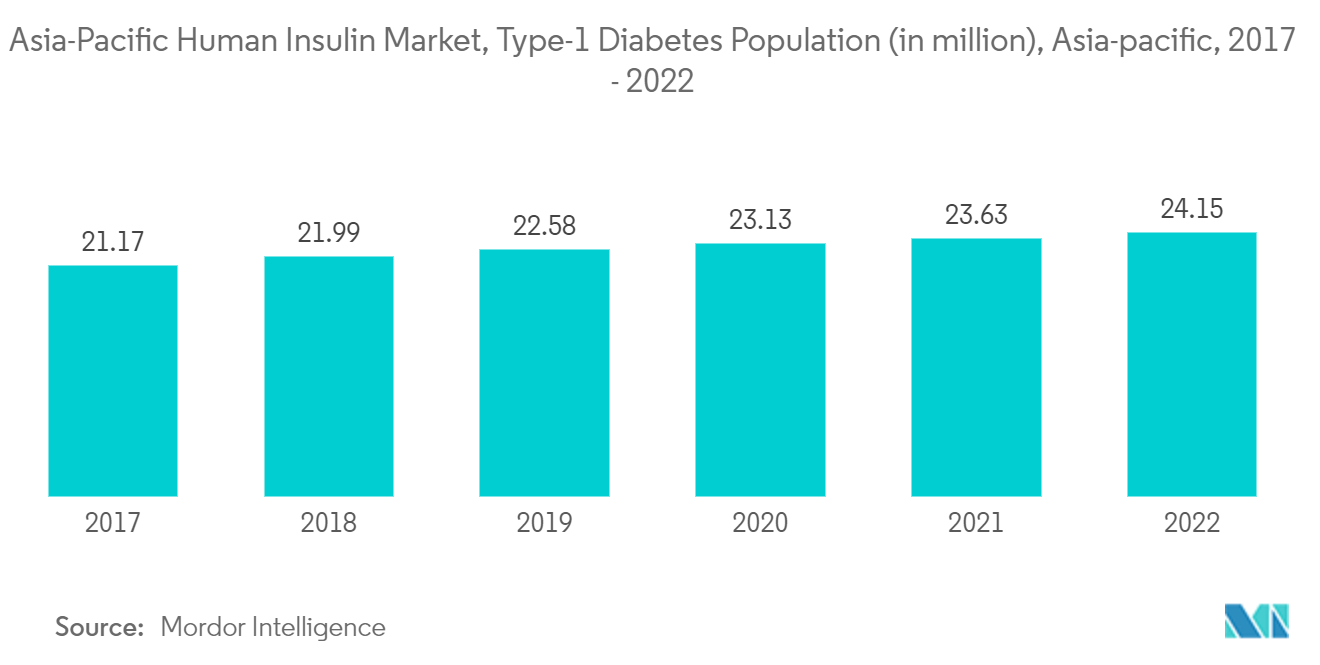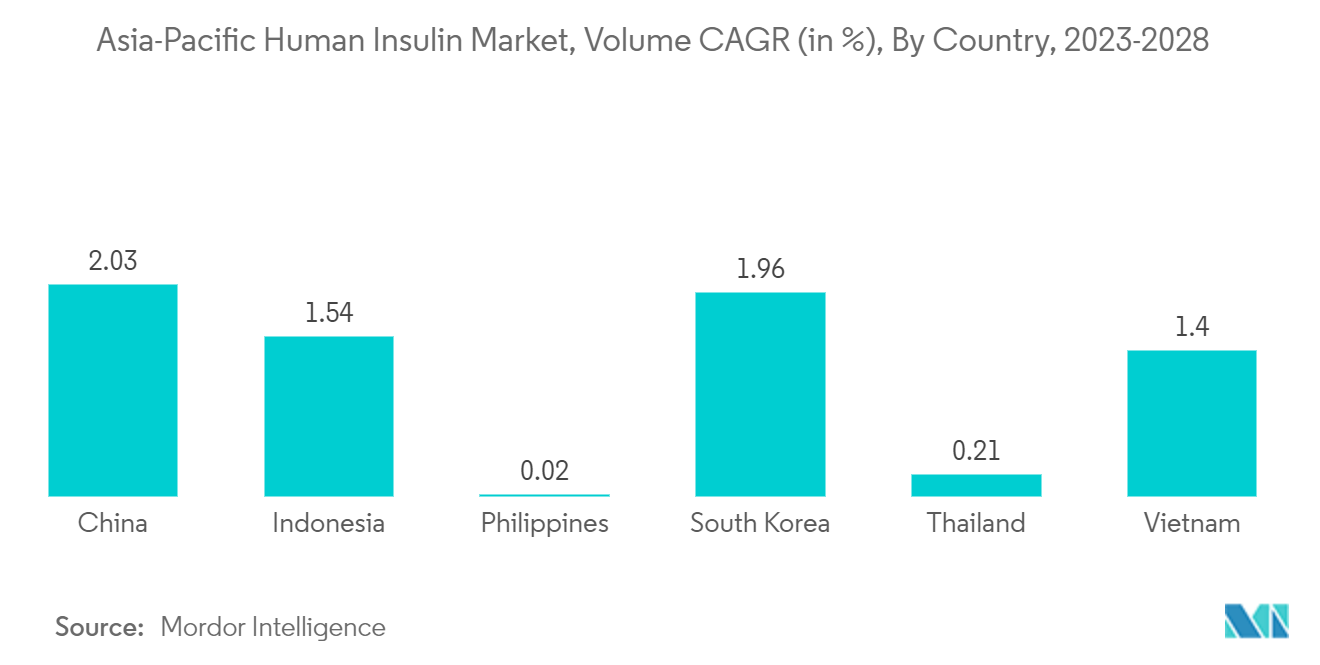Market Trends of Asia - Pacific Human Insulin Industry
Surge in APAC Diabetic Population is driving the market in forecast period
There would be a massive surge in the diabetic population in the Asia-Pacific region. The burden of diabetes is increasing, and it is expected to grow at a high rate in the Asia-Pacific region. The Asia-Pacific region dominates the diabetes market globally, contributing to 60% of the diabetes population. China and India have the highest diabetes population, especially type 2.
China has over 11% of its population suffering from diabetes, and in India, 5% suffers from diabetes. All Type 1 diabetes patients and a limited number of Type 2 diabetes patients require daily insulin injections as part of their treatment.
Poor healthcare infrastructure and utilization and lack of awareness about the disease in other countries of Asia-Pacific have complicated its prevalence. Furthermore, in these areas, most cases are uncontrolled or even undiagnosed until patients get symptoms of complications. Factors such as lack of awareness about the disease, unbalanced nutrition, and inadequate healthcare infrastructure and utilization are restraining the insulin market in the region.
As of 2022, the prevalence rates for diabetes ranged from 12% to 19% of the population in several countries in the region. Therefore, owing to the factors above, the growth of the studied Market is anticipated in the Market.

China dominates the Asia-Pacific Human Insulin Market
China is anticipated to hold the largest market share and is expected to maintain its dominant position during the forecast period, owing to huge patient pools and the ease in the regulatory process for insulin biosimilar drugs in the country. The incidence of type-2 diabetes (T2D) has rapidly increased over the recent decade, and T2D has become a leading public health challenge in China.
There is a considerable rise in the biosimilar drugs market in the Asia-Pacific, and China's Gan&Lee Basalin occupies almost 40% of the overall Glargine market. The country is witnessing a significant increase in generic drug manufacturers. Furthermore, the leading global players in the market studied faced intense competition from the regional players.
Diabetes is becoming an increasingly common condition in China. According to World Diabetes Day in 2030, there will be 643 million diabetics worldwide, the greatest amount. According to health professionals, urbanization, improving living standards, and an aging population are the main factors contributing to this spike. So, it is anticipated that during the coming several years, China's market for diabetes care will expand steadily.
Diabetes is a chronic illness that develops when the body either cannot use the insulin the pancreas makes effectively or cannot create any or enough of it. Type 1, Type 2 (the most prevalent kind), and gestational diabetes are the three primary subtypes of diabetes. Several early indications and symptoms of diabetes can be undetectable or modest. Almost two-thirds of diabetic patients in China were unaware of their illness and did not take any preventative steps. Diabetes that is left untreated can lead to major health issues like cardiovascular disease, chronic renal disease, and stroke.
All persons with type 1 diabetes, some people with type 2 diabetes, and some women who are pregnant who have diabetes need an ongoing supply of insulin. Novo Nordisk, the market leader in human insulin, controls the 20 billion yuan market for its analogs in China.


